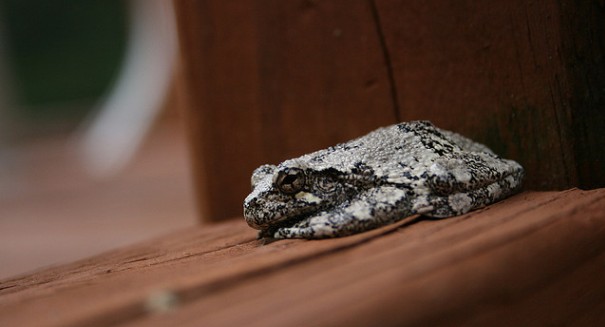
The research backs the multitasking hypothesis, which advances the idea that females favor males who can accomplish two ore more difficult-to-achieve actions simultaneously because they are higher quality males.
According to researchers at the University of Minnesota, female frogs favor males who can multitask.
The researchers examined gray tree frogs and found that females favor males whose calls demonstrate the capacity to multitask effectively. Male gray tree frogs generate “trilled” mating calls that are made up of a string of pulses.
Common “trilled” calls contain 20-40 pulses per call and males produce between 5-15 calls per minute. Males must deal trade off between call duration and call rate, but females favor calls that are longer and more frequent.
“It’s kind of like singing and dancing at the same time,” noted lead author Jessica Ward, a postdoctoral researcher at the University of Minnesota.
The research backs the multitasking hypothesis, which advances the idea that females favor males who can accomplish two ore more difficult-to-achieve actions simultaneously because they are higher quality males, according to Ward. The hypothesis, which looks into how multiple signals generated by males impact female behavior, is a novel area of curiosity in animal behavior research.
By studying the recordings of 1,000 calls, the researchers discovered that males are undoubtedly pressured to trade off between call duration and call rate, meaning that males that generate longer calls can only do so at slower rates.
“It’s easy to imagine that we humans might also prefer multitasking partners, such as someone who can successfully earn a good income, cook dinner, manage the finances and get the kids to soccer practice on time,” added the researchers.
The study was conducted as part of Mark Bee’s larger research goal of learning how female frogs are able to tell the difference between individual mating calls from a lot of calls taking place simultaneously. Bee is a professor in the University of Minnesota’s College of Biological Sciences’ Department of Ecology, Evolution and Behavior.
Humans, as they grow older, are relinquished of the capacity to tell the difference between individual voices in a crowd of people. According to the researching, learning how frogs hear could result in new advancements for hearing aids.
The results were described in greater detail in a recent issue of the journal Animal Behavior.
Leave a Reply